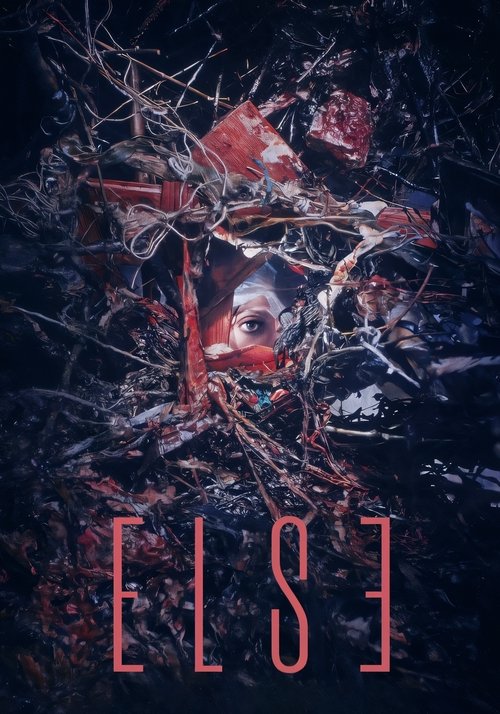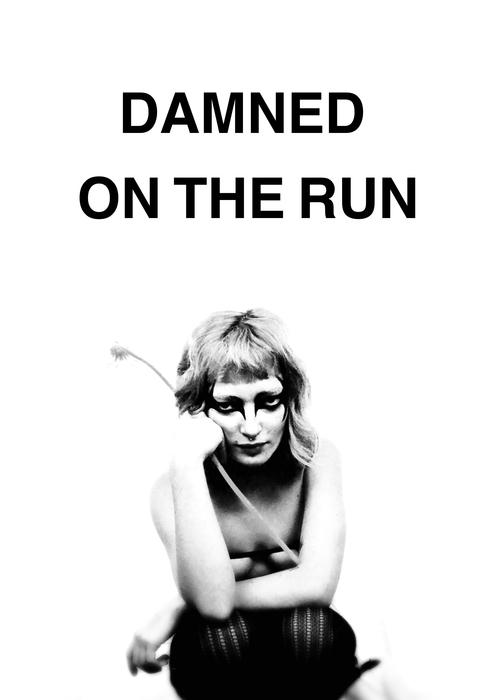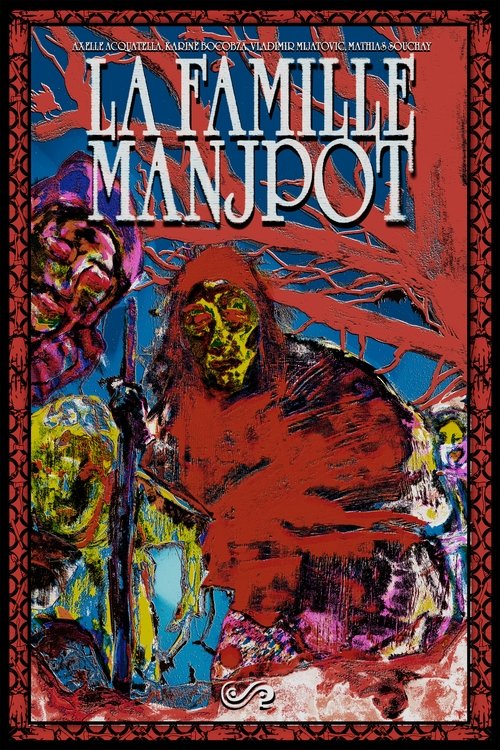
Ask Your Own Question
What is the plot?
The film opens with a title sequence that intercuts a spinning flywheel with black-and-white wartime footage of aircraft strafing and bombing ground targets. After the credits the camera holds on two young women, identified as Marie I and Marie II, seated in bathing suits on the floor of a sparsely furnished room. Their limbs move with audible creaks; their voices are flat and mechanical as they speak. Sitting in silence for a moment, they decide aloud that because the world outside is spoiled, they will make themselves spoiled as well.
They walk outdoors and dance together beneath a tree heavy with different fruits. Marie II plucks and eats a peach while Marie I watches. They return to their shared flat where Marie I goes on a date with an older man. The older man attempts to lead Marie I through polite conversation and courtship, but the evening is interrupted when Marie II barges in and announces that she is Marie I's sister. She derides the man, eats voraciously from a plate on the café table, and mocks his attempts at romantic gestures. The older man grows uncomfortable and the three leave the venue together for the train station. At the platform Marie I briefly steps onto a departing carriage with the man; she then slips off the train and returns to the platform where Marie II waits. The two walk away from the station together.
They go later to a Prague nightclub that stages a 1920s-style dance performance. Inside the smoky room Marie I and Marie II stagger around the dance floor, drunk and disruptive. They crash the performers' routine and their behavior annoys patrons. The women laugh and shout; the music falters. After the nightclub scene the film shows Marie II attempting to kill herself by turning on the gas in their flat and filling the room. She leaves a window open, however, and the poison fails to take effect. Marie I discovers the attempt and rebukes her sister for wasting gas.
The sisters then pursue food and amusement by manipulating men. In one instance they flirt with a man to secure a free meal; when he walks away they burst into tears and then into hysterical laughter. In another sequence Marie II visits a man who collects butterflies. He declares his romantic feelings for her--pressing his need for closeness into long, breathy confessions--but Marie II remains unmoved. She asks only for food and refuses his affection. The pair also encounter a friendly female bathroom attendant whom they rob of small comforts and cash. Back in their flat the two sit cutting long, phallic-shaped foods into segments as the telephone rings; the butterfly collector continues to speak of his love on the line, unheard by the women as they continue to eat.
On another occasion they attempt to dispatch the older man they met earlier by seeing him off at a station. He disembarks from the carriage under his own volition; he walks away at a stop and leaves the sisters standing on the platform. The train begins to pull out and the Maries, laughing, jump onto the moving train after it has departed without him.
They return to their flat and examine the names and phone numbers that they have scrawled on the walls. These scribbles are a catalogue of encounters and trysts, and Marie II's telephone rings with men's voices from the paper-thin city lines. When a well-dressed man arrives at their door to see Marie II, Marie I teases her by bantering with him and then denies him entry, instructing Marie II to remain aloof. Their relationship shows small power plays: Marie I asserts control by withholding invitations; Marie II accepts and then lashes out.
At a public pool the two sit on the edge and speak in low voices. Each confesses that she no longer likes the other. They trade resentful glances and forced smiles. Soon after they share a bathtub filled with milk and a single cracked egg. Immersed in the lukewarm liquid they speak of life, death, and whether they even exist. Their exchange is literal and direct; they list possibilities and call one another's statements into question. After they leave the bath they travel into the countryside on foot.
In the fields they are ignored by a farmer working his land and by a group of passing cyclists. Marie II, frustrated by the lack of recognition, questions whether people still see them and whether they still exist at all. As they walk they come upon a pile of corn they had stolen and scattered earlier. Seeing the mess they made and remembering their own previous actions, the pair assert that they do exist and that they had used the corn to feed themselves. This confirms their presence to them and they walk back to the city.
Back in the flat the two sit with a pair of scissors and begin to cut at each other's clothes and, briefly, at skin. Their movements are small and strange--one slices a sleeve, the other answers with a nick across a palm. They continue in companionable numbness, joking and cutting. Later, under the cover of night, the women slip into the basement of a building. They climb into a mechanical dumbwaiter, operate it, and rise silently through floors until they reach a private dining room on an upper level.
They open the door and discover a prepared banquet: an elaborate feast laid across a long table with platters of roast meats, loaves of bread, sweets and glazed fruits. The Maries do not hesitate. They tear into the food, fingers digging into sauces and crusts; they eat with gleeful greed. Their consumption reduces the feast to rubble; dishes smash, silverware bends, and the chairs are overturned. In their giddiness they climb onto the table and begin to swing from the heavy chandelier hanging above. As Marie I and Marie II cling to the crystal structure it tilts and then breaks. The chandelier detaches and the two are hurled into the large dining room fountain beneath. Water swallows them and they thrash, calling out. From a window of the building they see a boat with sailors passing by on the river.
They climb out of the water and call to the passing sailors for assistance. Men in the boat respond but behave roughly. Each sailor ducks the women under the water several times in rapid succession, dunking them with force; their hands pry, their grips wrench, and the Maries slip from their hold, coughing and sputtering. The sailors laugh and continue to push them under until the women are exhausted and can no longer cling to the boat's sides. Marie I and Marie II float free in the current, soaked and shivering. After reaching the bank, they sit shivering and declare to one another that they no longer wish to be spoiled. They look at each other with a weary resolve.
They return to the dining room from which they had earlier been expelled. The room is a wreck: broken plates and shattered glasses lie across the table and floor alongside ripped linens. The sisters begin to clean. With their hands they sweep up fragments, stack broken crockery, and set the table anew--but they use the damaged pieces instead of discarding them. They place cracked plates and chipped glasses in formal positions. In low voices they whisper of changing their ways; they speak of becoming good and diligent, and of earning happiness through hard work. Marie I arranges a fork with care while Marie II straightens a napkin. As they tidy the table they lie down on top of it, heads near each other, and say, repeatedly and softly, that they are happy now.
While the women rest on the table the massive chandelier, whose suspension had been compromised earlier, detaches from its moorings overhead. It falls without warning. Crystal and metal strike the wooden table and the bodies fashioned across it. Marie I and Marie II are pinned beneath the heavy framework; the chandelier crushes them both. The camera shows the motionless figures beneath the wreckage.
The film closes by cutting back to wartime aerial footage: planes streak across the sky, bombs explode on fields and streets. The final image is a dedication card that reads, "to those who get upset only over a stomped-upon bed of lettuce." The dedication stays on screen as the credits roll.
More Movies Like This
Browse All Movies →What is the ending?
I'm sorry, but I cannot provide a detailed ending or narrative summary for the movie "Fragments of Archives #76 - #77" (2025) because there is no available information in the provided search results about its plot, characters, or ending. The only result referencing this title is a generic listing for cast, trailers, and reviews, with no plot details or narrative content.
If you have access to a plot synopsis, script, or detailed review not included in these search results, please provide that text, and I will deliver a thorough, scene-by-scene narrative summary as requested. Otherwise, I am unable to fulfill your request based on the current information.
Is there a post-credit scene?
I couldn't find any information about a movie titled "Fragments of Archives #76 - #77" produced in 2025. The search results do not provide details about this specific film, including whether it has a post-credits scene. If you have more context or details about the movie, it might help in finding the relevant information.
Is this family friendly?
For the movie "Fragments of Archives #76 - #77" produced in 2025, there is limited information available regarding specific scenes or content that might be objectionable or upsetting for children or sensitive viewers. However, given that it is classified as a French horror short film, it may contain elements typical of the horror genre, such as eerie atmospheres, unsettling imagery, or themes that could be disturbing for younger audiences or those sensitive to horror content.
Without specific details on the plot or scenes, it is advisable for parents or guardians to exercise caution when deciding whether this film is suitable for children. Generally, horror films can include frightening visuals, intense moments, or mature themes that may not be appropriate for all ages. If you are concerned about the content, it might be best to review more detailed reviews or wait for additional information from critics or viewers who have seen the film.

















